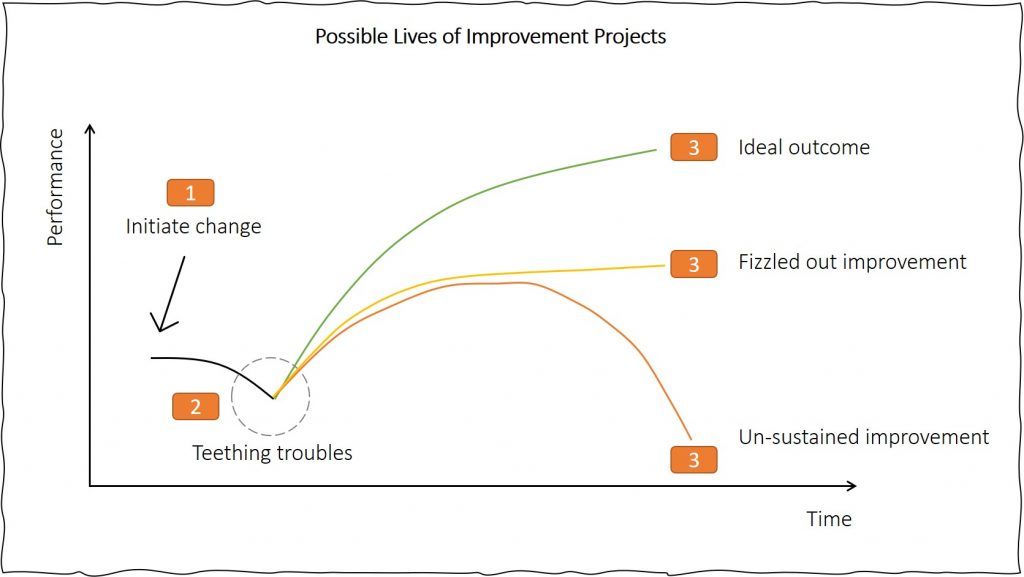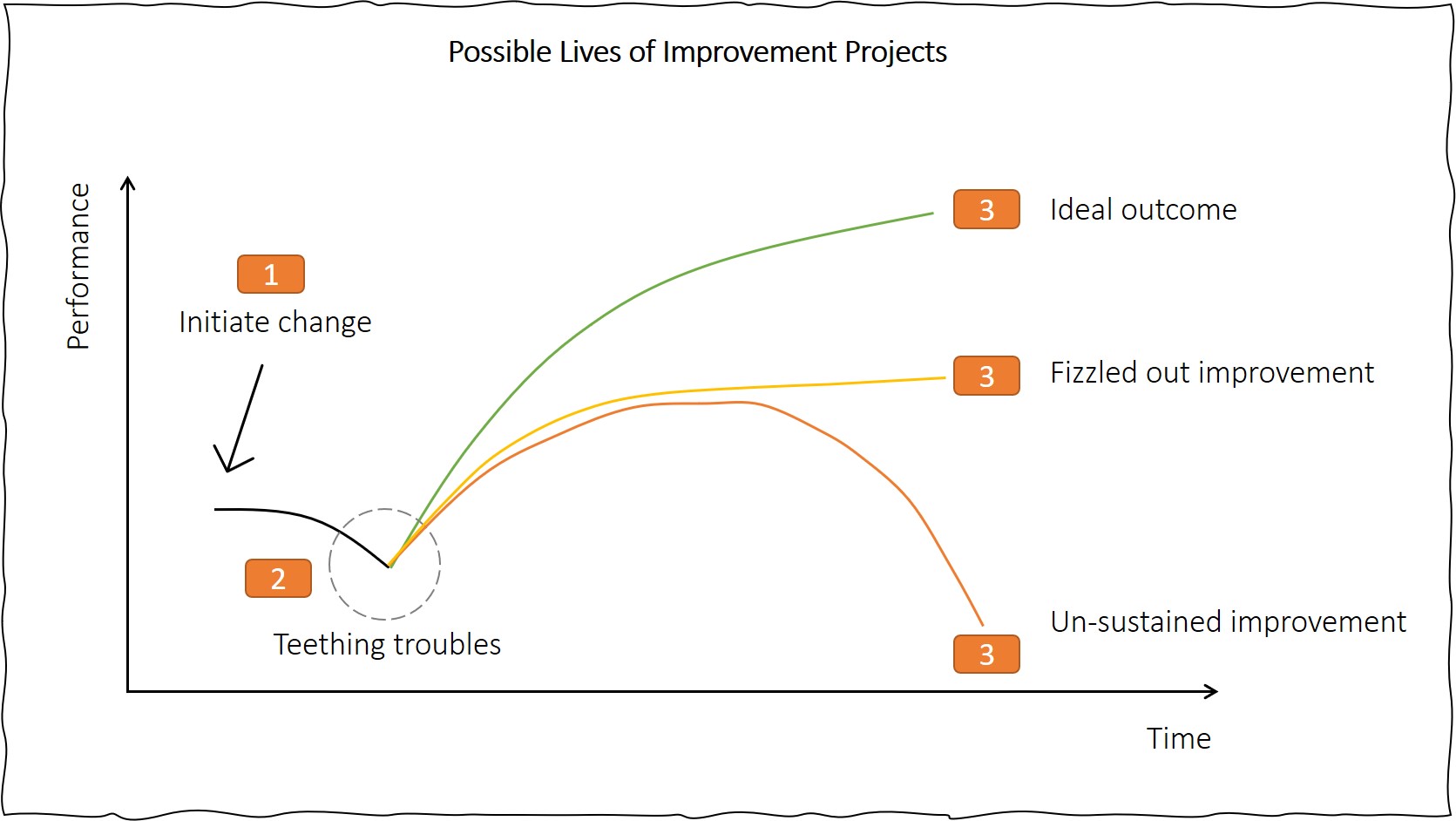I have come to a conclusion that most improvement projects don’t finish, they just ebb away.
No fanfare, no end of project review, no maximisation of results.
Rather than have a distinct ending to the project many of them just fade. Sure, results are achieved but not to the level that they could (or should) be.
This is quite common with many projects and not just improvement projects. The difference with other projects is that there is often an outside interest, usually a customer, that ensures that the project does complete. Whereas this outside force yields a conclusion (possibly with unnecessary costs and questionable quality levels depending on how it was managed) there often isn’t an outside force for improvement projects.
The internal force of your leadership, or the motivation of your project lead, is sometimes all you have to combat this.
The level of planning makes all of the difference
The level of detail with your planning activities really does play a starring role in this dilemma and I can distinguish between two types of organisation here:
- Those that plan out what their project will do (and what it won’t) and what will happen at the end.
- Those that have a good idea and get on with implementation without ever thinking about how the project will end.
Too many improvement projects fall into the second category unfortunately and suffer the fate I outlined at the start of this article.
A great way to get around this is to use a project charter. An alternative name for this document is a Project Initiation Document (PID). Many larger organisations swear by these documents as they help to clarify the scope, the business case, the deliverables and other factors that help to ensure a successful project.
But, let me share with you what I feel is the biggest factor in making the charter / PID work and to help countless other projects to deliver their planned results.

A clear vision
Painting a picture of what result you want and describing it in vivid detail helps people to understand what they have to do in order to achieve the result.
Let me give you a simple example.
One business I worked with implemented a new software solution that would speed up their scheduling process. After the software had been installed and the users trained they never seemed to be able to demonstrate any improvement with their results. Peeling back the surface I found multiple systems now being operated and none of the efficiencies that they had hoped for. We painted a simple picture of what good looked like, which included:
- Production Managers using data out of the system directly.
- Shop floor staff following the work to lists (and not other hand made schedules).
- Real time exception reporting being available.
- A reduction in supporting spreadsheets being used to manage production.
How do you paint a vivid picture?
Let me give you a couple of pointers to help you paint a picture for your teams, to help you close out projects more effectively in the future:
- Express what people will be doing differently in the future.
- Say what will start happening and what will stop happening.
- Explain how you want tasks to happen (especially if there is a new method that is far more efficient).
This doesn’t have to be complicated; it needs to be effective.
If you find your team / business struggling to close down improvement projects then take a step back, just for a moment. Think through the three bullet points above and make a list on how you want to experience the conclusion of each project that you are struggling with. Share this information with your team and re-formulate the action plan.
Often, just making the bulls-eye more visible is all you need to do differently!
0,Making It Happen